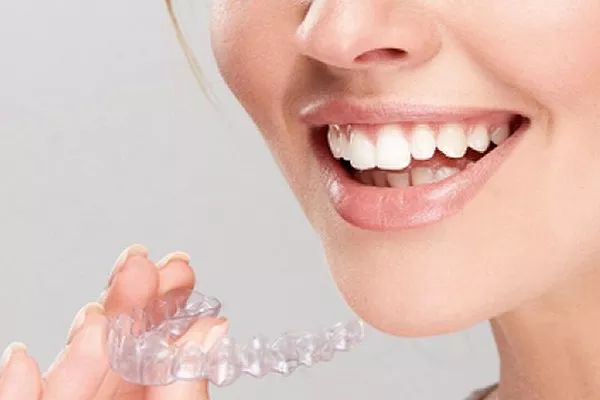Gingivitis is a common dental problem that affects many adults, but the good news is that it’s a condition that can be effectively treated and managed. In this comprehensive guide, we will explore the most effective methods and strategies to treat gingivitis in adults. From preventive measures to professional dental treatments, we’ll cover it all to help you achieve optimal oral health.
1. Understanding Gingivitis
Before delving into the treatments, let’s begin by understanding what gingivitis is and what causes it. Gingivitis is a mild form of gum disease characterized by redness, inflammation, and bleeding of the gums. It is primarily caused by the accumulation of plaque, a soft, sticky film of bacteria, on the teeth and gums. Poor oral hygiene, smoking, certain medications, and underlying medical conditions can increase the risk of developing gingivitis.
1.1. The Role of Plaque
Plaque is the main culprit behind gingivitis. When it’s not removed through regular brushing and flossing, it can harden into tartar, which can only be removed by a dental professional. The bacteria in plaque release toxins that irritate the gums, leading to inflammation and bleeding.
1.2. Risk Factors
Understanding the risk factors associated with gingivitis is crucial. These include smoking, diabetes, hormonal changes (such as pregnancy or menopause), certain medications (e.g., anticonvulsants and calcium channel blockers), and a weakened immune system.
2. Preventive Measures
Preventing gingivitis is essential for maintaining good oral health. Here are some preventive measures that can help you keep gingivitis at bay.
2.1. Regular Oral Hygiene
Consistent oral hygiene practices are the cornerstone of preventing gingivitis. Brush your teeth at least twice a day using a fluoride toothpaste and a soft-bristle brush. Floss daily to remove food particles and plaque between your teeth.
2.2. Mouthwash
Using an antimicrobial mouthwash can help reduce bacteria in your mouth and prevent plaque buildup. Look for a mouthwash with the American Dental Association (ADA) seal of approval.
2.3. Balanced Diet
Eating a balanced diet that’s rich in fruits and vegetables can boost your immune system and help fight gum inflammation. Avoid excessive sugar consumption, as it can contribute to plaque formation.
3. Professional Dental Treatments
If gingivitis has already set in, professional dental treatments are essential to effectively treat the condition. Here are some of the most common treatments offered by dental professionals.
3.1. Scaling and Root Planing
Scaling and root planing, also known as deep cleaning, is a non-surgical procedure to remove tartar and plaque from the teeth and roots. This helps the gums reattach to the teeth and reduces pocket depth.
3.2. Prescription Medications
In some cases, your dentist may prescribe medications like antimicrobial mouthwashes or oral antibiotics to help control the infection and reduce inflammation.
3.3. Laser Therapy
Laser therapy is a cutting-edge treatment for gingivitis. It involves using a dental laser to remove infected tissue and promote the growth of healthy gum tissue.
3.4. Flap Surgery
In severe cases of gingivitis, your dentist may recommend flap surgery to lift the gums and clean the roots of the teeth. This procedure is usually performed under local anesthesia.
4. The Importance of Regular Dental Checkups
Regular dental checkups are crucial in the prevention and treatment of gingivitis. Dentists can detect early signs of gingivitis and provide guidance on maintaining proper oral hygiene. Dental checkups every six months are recommended, but your dentist may suggest more frequent visits if you have a history of gum disease.
5. Home Care Tips
In addition to professional treatments, there are several home care tips you can follow to manage gingivitis effectively.
5.1. Gentle Brushing
Use a soft-bristle toothbrush and be gentle when brushing to avoid irritating the gums. Brush for at least two minutes, covering all surfaces of your teeth.
5.2. Interdental Brushes
Consider using interdental brushes or soft picks to clean between your teeth, where your toothbrush can’t reach effectively.
5.3. Stress Management
Stress can weaken the immune system and contribute to gum disease. Engage in stress-reduction activities such as meditation, yoga, or deep breathing exercises.
6. Monitoring Progress
After undergoing treatment for gingivitis, it’s important to monitor your progress. Regularly check for signs of improvement, such as reduced gum bleeding and inflammation. If you notice any worsening symptoms, contact your dentist immediately for further evaluation and guidance.
In conclusion, gingivitis is a common dental problem that can be effectively treated and managed with the right strategies.
Related Links:
How to fight gingivitis fast?
How to prevent gingivitis from getting worse?
How to get rid of bleeding gums naturally?




























